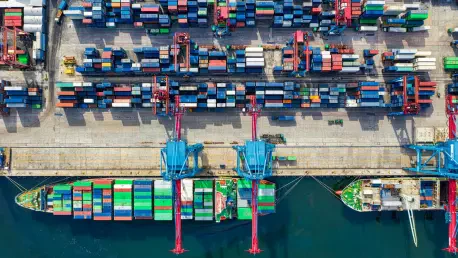The rapid growth of container technology has not only brought efficiency to application deployment but has also introduced challenges related to security vulnerabilities and resource optimization. Addressing these concerns, Chainguard has introduced multi-layer hardened container images, dramatically enhancing both security measures and performance metrics. This strategic development focuses on breaking down container images into smaller, more manageable layers, facilitating optimized updates and better use of network bandwidth. By adopting a layered security approach, Chainguard aims to mitigate vulnerabilities even before they become exploitable threats, heralding a significant advancement in the evolution of container technology.
Efficiency through Layered Image Structure
Reducing Bandwidth and Pull Times with Structured Imaging
Chainguard’s innovative approach to container images involves structuring them based on a “per-origin” model, which essentially groups packages from the same source into the same layer. This nuanced strategy enables developers to experience a significant reduction in the amount of data that needs to be downloaded during updates. Historically, single-layer images posed the inconvenience of requiring a complete download for even minor changes, adversely affecting pull times and developer productivity. In contrast, the new multi-layer model achieves a 70% reduction in unique layer data size, offering a substantial improvement over older methods.
Moreover, this improvement is not confined to mere data size reductions; it also leads to a 70-85% decrease in cumulative bytes transferred during updates. Such efficiency is particularly advantageous for complex applications like PyTorch and TensorFlow, where frequent updates are the norm. Developers now enjoy faster access to pivotal updates, while companies benefit from decreased bandwidth usage costs and improved deployment times. This structural overhaul of container images underscores Chainguard’s commitment to optimizing performance while simultaneously bolstering security.
Enhancing Developer Experience and Performance
The intricate layering strategy implemented by Chainguard also focuses on enhancing the overall developer experience, addressing long-standing issues of bandwidth constraints. Through intelligent ordering and parallel downloads, images can be updated in a much more streamlined fashion. This new ordering facilitates compatibility across various systems, minimizing the friction that often accompanies software updates and ensuring that end-users face minimal disruptions.
Hardened container images contribute to this improved user experience by offering preemptive security measures against potential vulnerabilities. The final layer, designed to manage OS-level metadata, provides an additional safety net, effectively keeping sensitive data secure and ensuring compliance with industry standards. As developers increasingly assume greater responsibility for application security, Chainguard’s advancements provide them with tools to proactively safeguard their applications, thereby fostering a culture of security-first development.
Growing Adoption of Hardened Container Images
Shift Toward Security-Oriented Development Practices
The adoption of Chainguard’s multi-layer container technology reflects a broader trend in the industry towards integrating security measures earlier in the application development process. A decade ago, most vulnerabilities were managed reactively, often resulting in costly patches and delayed deployments. However, with the rise of security-focused methodologies, developers now integrate protective measures during the initial phases of development, thus minimizing risks and enhancing the robustness of applications.
Chainguard’s drive to harden over 1,300 images stands as a testament to this progressive shift. Each hardened image is designed to address and mitigate known vulnerabilities, providing developers with a reliable foundation upon which to build their applications. This proactive approach is gaining traction as organizations recognize the critical importance of securing their applications before they hit the production environment, reducing the likelihood of cyber threats penetrating their systems.
Implications for Future Development and Deployment
Looking ahead, the implementation of multi-layer security within container technology is set to become a standard practice, with significant implications for the software development lifecycle. This trend encourages continuous vigilance and adaptation to emerging security challenges, ensuring that applications not only maintain high performance and reliability but also offer an unyielding defense against potential attacks. Chainguard’s pioneering efforts pave the way for broader adoption of such technologies across industries, underscoring the importance of preemptive defense measures.
Moreover, as more organizations utilize hardened images, the demand for skilled developers knowledgeable in these technologies will likely increase. This shift marks an exciting evolution in the software development landscape, where developers are empowered to not only create innovative solutions but also set a high bar for security standards. This dual focus on performance and security ensures that container technology remains a pivotal component of robust application deployment strategies.
A Look Ahead
The swift expansion of container technology has significantly improved application deployment efficiency, but it has also introduced challenges like security vulnerabilities and the need for resource optimization. To tackle these issues, Chainguard has launched multi-layer hardened container images, marking a substantial enhancement in both security protocols and performance standards. This innovative approach dissects container images into smaller, more manageable layers, facilitating optimized updates and more efficient use of network bandwidth. By employing a layered security strategy, Chainguard focuses on preemptively addressing vulnerabilities, aiming to neutralize potential threats before they become problems. This effort signifies a major leap forward in the evolution of container technology, where security and resource management are pivotal. As the digital landscape continues to evolve, such advancements are critical in ensuring robust and secure application environments, highlighting the importance of proactive measures in contemporary tech ecosystems.









